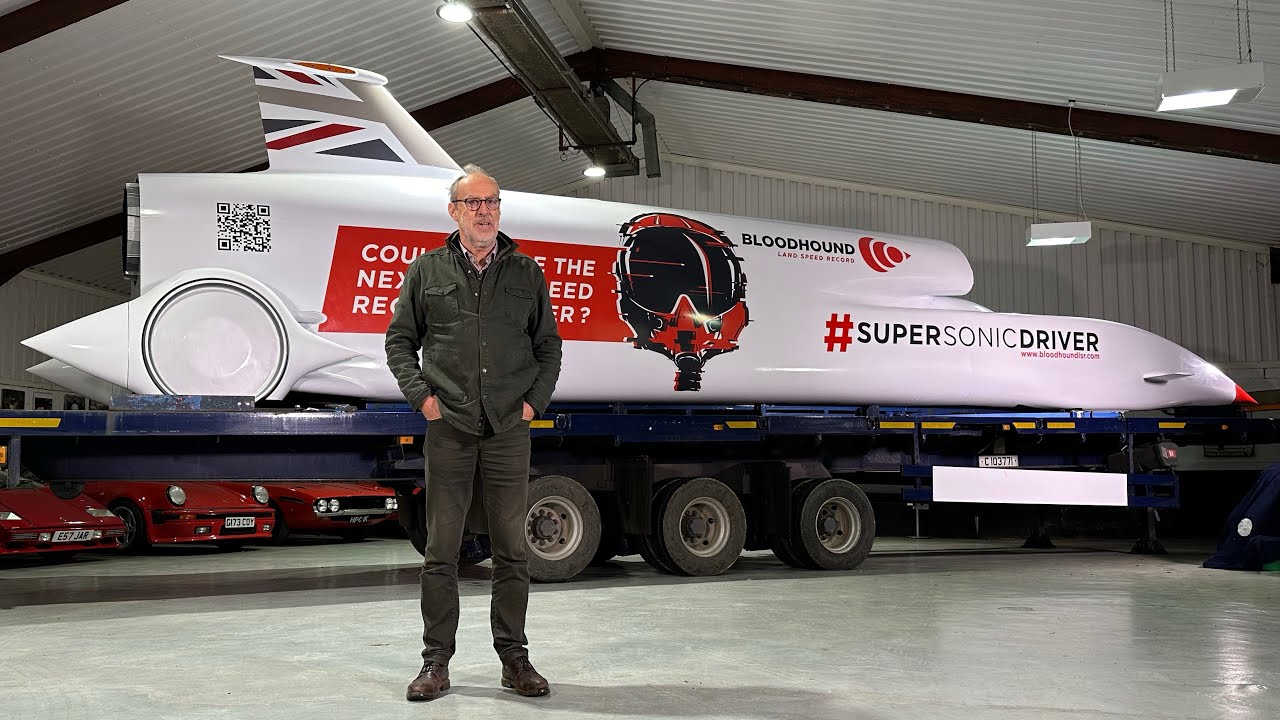Here is more about Bloodhound LSR, which in testing so far has achieved a top speed of 628 miles per hour (1011 km/hour). It is powered by a Eurojet EJ200 turbofan afterburning engine with a monopropellant rocket for extra thrust. Testing and speed record runs are done at Hakskeen Pan in Northern Cape, South Africa, a dry lake bed.
Other than its presumably being a requirement for the land speed record, I can’t see any reason why there should be a human driver on board such a vehicle. Steering in a straight line, especially when it is clearly marked on the test track, is hardly difficult, and an autonomous system could monitor sensors distributed around the car and react far more quickly than a human driver. If they have to put a human’s life at risk to claim the record, they could at least do all of the development testing unmanned and then carry a “spam in a can” passenger for the record runs. This would simplify the requirements for their already spammy “Supersonic Driver Search” promotion, opening the door to celebrities and those with bulging checkbooks who have already checked off a Virgin Galactic flight to “space”.
4 Likes
So what you propose is akin to the early space flights, where the human was really only a substitute for the monkey. Ride the rocket up, then down.
4 Likes
Essentially, yes. Nobody (at least since 1986) would consider putting a human on a space flight when the presence of the human wasn’t necessary to accomplish the mission. In addition to unnecessarily risking a human life, the presence of a crew requires expensive, heavy, and potentially unreliable life support systems whose failure can end the mission prematurely.
In fact, ever since the dawn of human space flight, every crewed flight into orbit has been performed completely automatically, with the pilots doing nothing more than watching the gauges to see what was happening, with their only possible action being to trigger the crew escape system if something breaks. (The Apollo capsule and Space Shuttle actually had the capability for the crew to try to take over steering and throttle control manually if the booster’s guidance system completely failed, but this was never, ever used or even tried.)
And every manned space flight vehicle other than the Space Shuttle and every high-performance military aircraft has a crew escape system able to rescue the crew in most accident scenarios. With a supersonic car, there is no ejection seat which could work quickly enough or withstand the air blast to permit ejection at speed if disaster occurred. (There are “zero-zero” ejection seats which allow safe escape even on the ground with zero airspeed, but ejection at zero altitude and Mach 1 is something else again, and can never happen in an airplane.)
So, I’d say, if having a “driver” on board is a requirement for the Land Speed Record, nothing says you can’t do all of the development and test runs autonomously, then only have a “driver” for the actual record attempts. You could even give him a steering wheel like the ones on kiddie car seats back in the day before Safetyland offspring had to be enclosed in armoured impact capsules when being chauffeured to and from their designated play dates.
5 Likes
You make a good point, but Mach 1 ejection is possible in an aircraft; the zero altitude is only a factor where the ground makes a barrier (so when landing or taking off). I do not know of any aircraft that would not allow an ejection sequence to initiate in an aircraft - actually regardless of parameters. The crew is suppose to know the particular seat parameters and when (and IF) to initiate ejection.
4 Likes
